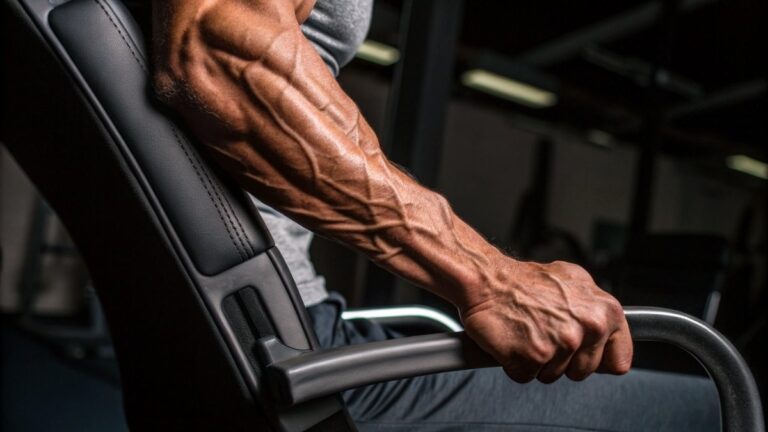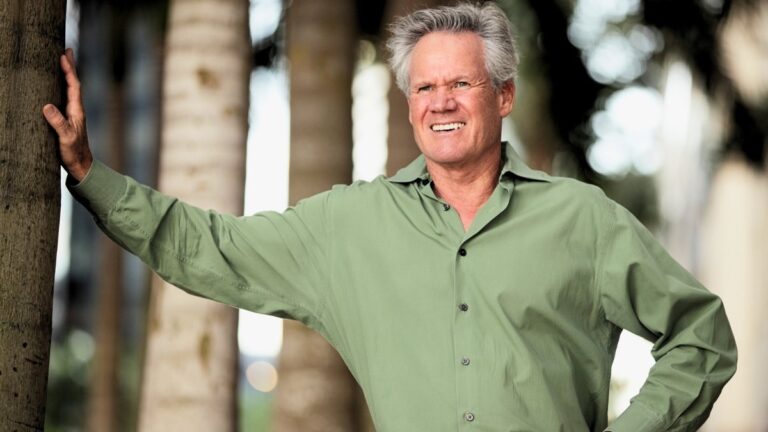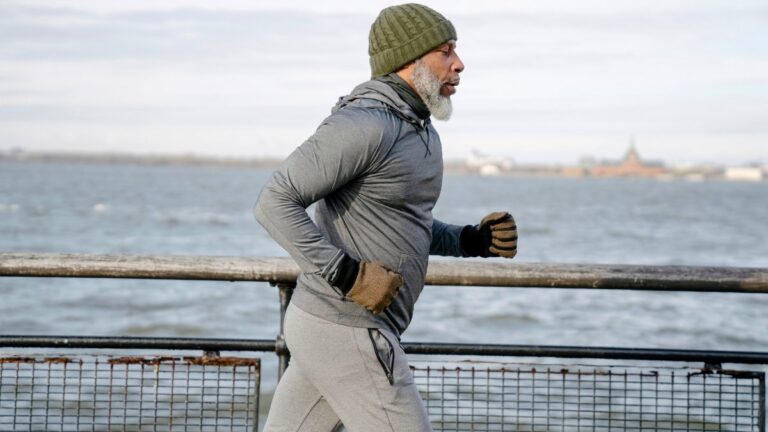Don’t Let Your Muscle Fade: 9 Foundational Exercises for Men in Their 50s & Beyond
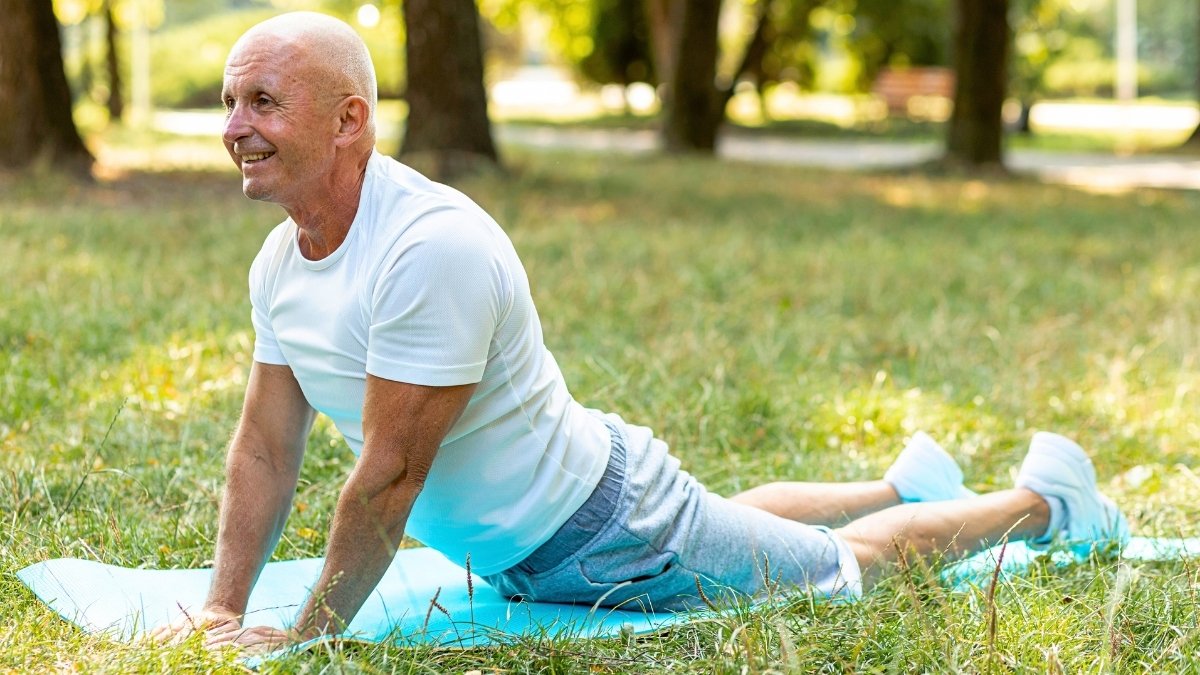
You’ve noticed it happening: the jar that used to open easily now requires two hands, the stairs feel steeper, and your golf swing has lost its power. Getting up from the floor takes an extra push. You’re not imagining it.
Here’s what’s actually happening in your body: men lose 3-5% of their muscle mass every decade after 30, and that loss speeds up after 50. Research published in the Journal of Applied Physiology shows this muscle loss isn’t just about appearance—it’s about losing strength for daily activities you’ve always taken for granted.
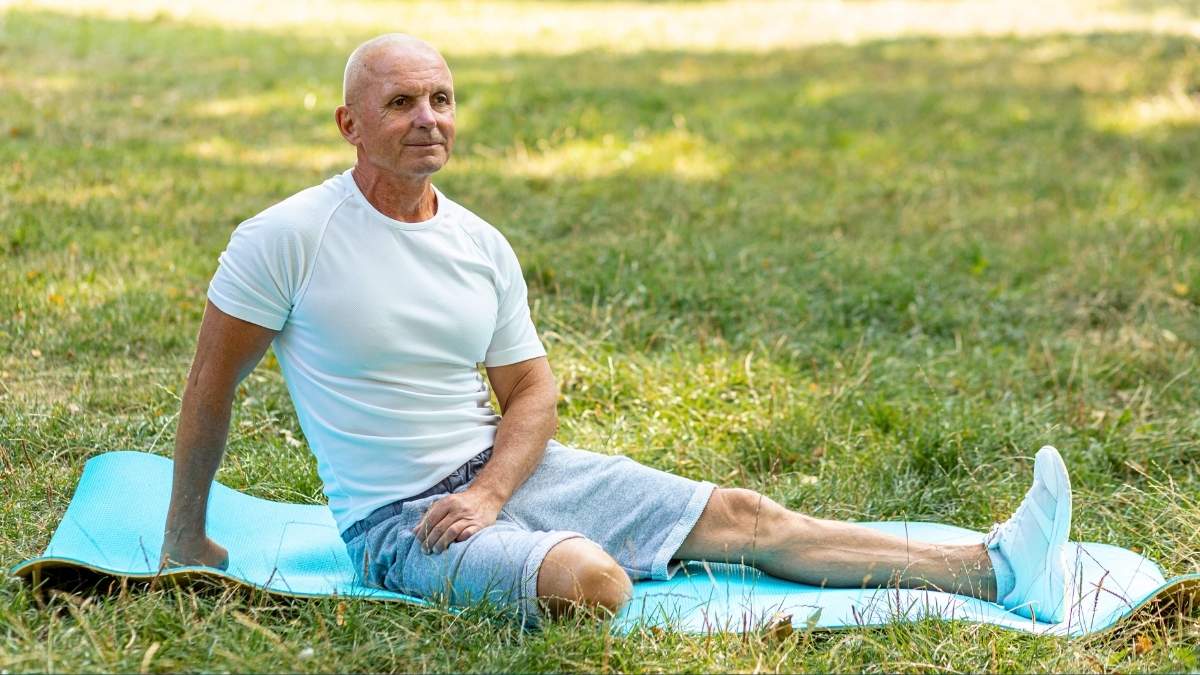
But here’s the good news that most men don’t know. Targeted exercises for men over 50 can reverse muscle loss by 25-30%, even if you’re starting from scratch. You can rebuild lost strength. It just requires a different approach than what worked in your 30s.
In this guide, you’ll discover nine specific exercises designed for your body’s current needs. No risky moves that stress aging joints. No complex routines. Just proven strength training that builds real-world power in 90 minutes per week.
Why Traditional Workouts Fail Men Over 50
If you’ve tried to get back in shape using the same workouts from your 30s, you’ve probably noticed something: they don’t work anymore. Worse, they might have left you injured.
Your joints can’t handle the pounding anymore. Burpees, box jumps, and heavy deadlifts put stress on knees, shoulders, and hips that have decades of wear. What felt challenging at 30 feels dangerous at 50—because it is. One wrong landing can sideline you for months.

Your body needs twice as long to recover now. Research in the Journal of Applied Physiology shows that muscle recovery takes 48-72 hours after 50, compared to 24-36 hours at 30. Working out daily like you used to? That’s how injuries happen. Your muscles never get the repair time they need.
Your hormones are working against you. Testosterone drops about 1% every year after 40. By 50, you have significantly less of the hormone that builds muscle. This means you need smarter training, not harder training.
Most programs skip the mobility work you desperately need. Flexibility and joint mobility become crucial after 50, but generic programs ignore this. They focus on lifting heavy while your tight hips and stiff shoulders are screaming for attention.
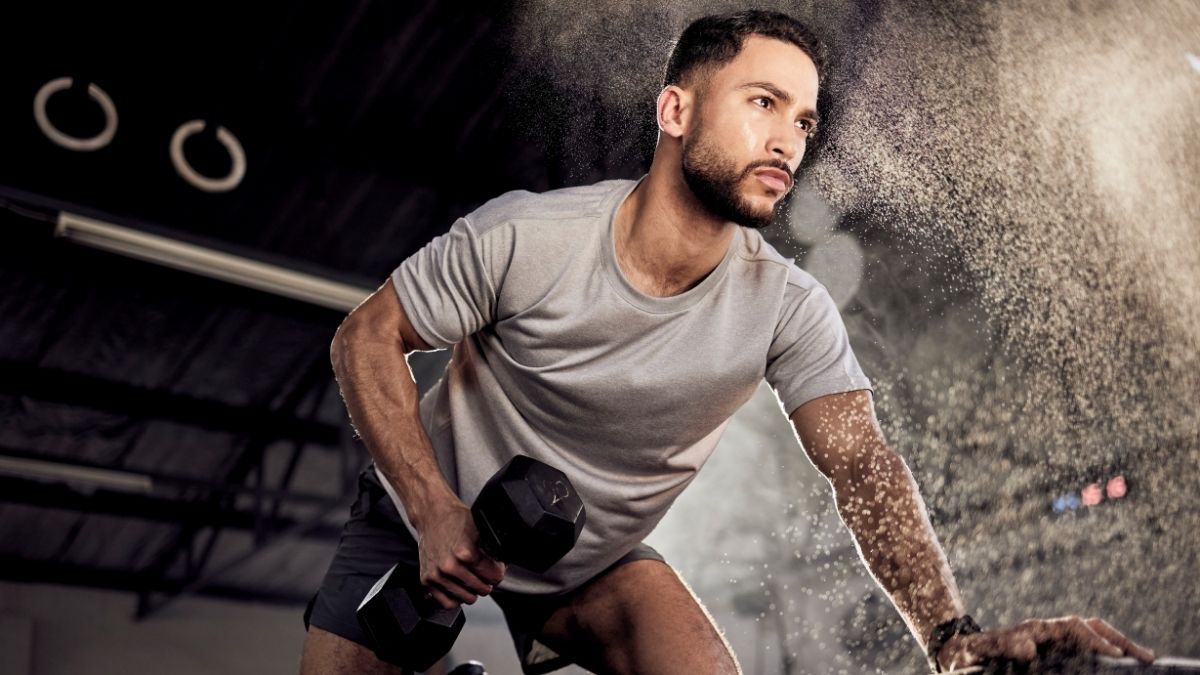
The “no pain, no gain” approach will wreck you. Pain is your body’s warning system. At 50, pushing through pain doesn’t make you tough—it makes you injured. Take Mark, 54, who tore his rotator cuff doing CrossFit designed for 25-year-olds. He was out for eight months.
Recovery Comparison:
- Age 30: Back to full strength in 24-36 hours
- Age 50: Needs 48-72 hours between sessions
- Age 60: Requires 72-96 hours for complete recovery
The solution isn’t to give up exercise—it’s to work smarter with age-appropriate workouts that match your body’s current needs.
H2: The 9 Foundation Exercises for Men Over 50
Staying strong after 50 isn’t about pushing heavy weights — it’s about training smart. These 9 foundation exercises for men over 50 were chosen because they target what really matters: strength, mobility, and balance. These are the three pillars that protect you from falls, boost energy, and keep you independent for decades.
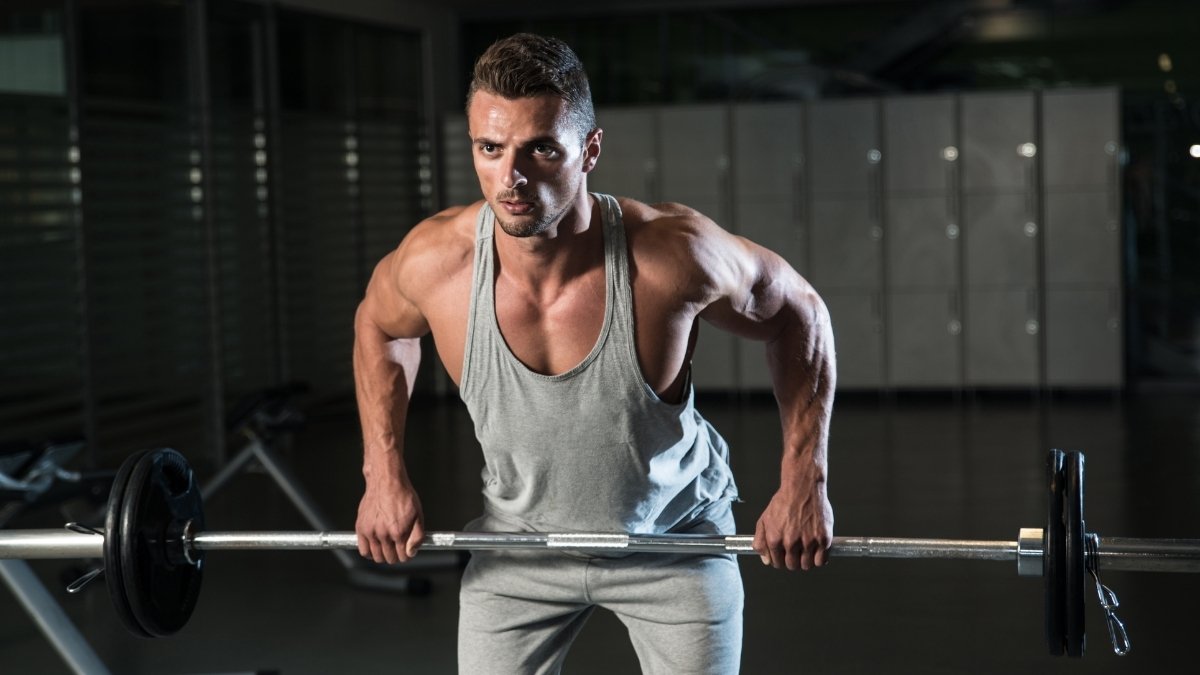
You don’t need fancy machines. A pair of dumbbells, a resistance band, and your bodyweight are enough. What makes these moves different is that each one mimics real-life movement — standing up, reaching, lifting, and stabilizing. That’s why they work better than random gym routines.
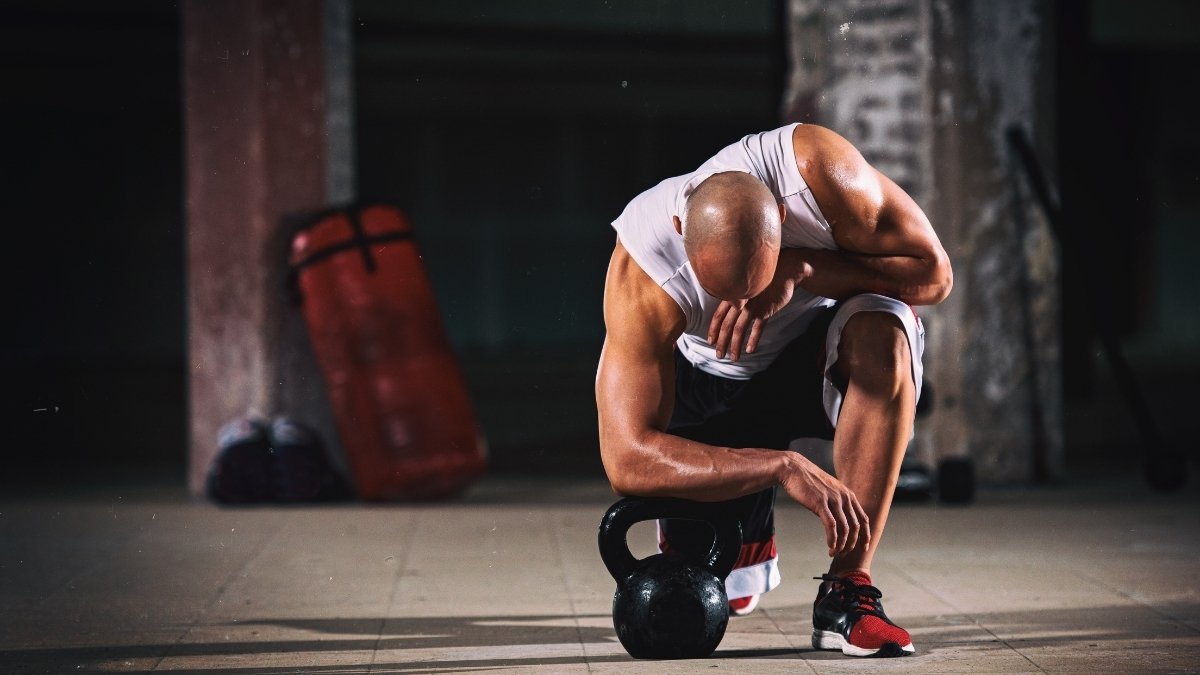
Aim for three sessions per week, giving your body at least one rest day between workouts. Focus on good form before adding weight — bad technique does more harm than help.
These exercises build strength training for older men that fits real life. You’ll move better, feel younger, and regain confidence in your body — one rep at a time.
Strength Exercises: Build Real Power for Daily Life
These three strength exercises form the backbone of muscle loss prevention. They build the leg, chest, and hip strength you need for everything from climbing stairs to picking up grandchildren.
Exercise 1: Goblet Squat
This single movement will make standing from chairs, climbing stairs, and getting off the floor dramatically easier. The goblet squat builds leg strength while protecting your knees better than traditional barbell squats.
Research shows squats increase bone density in your hips and spine—critical for men over 50. The goblet position (holding weight at chest) keeps your back safer than a barbell across your shoulders.
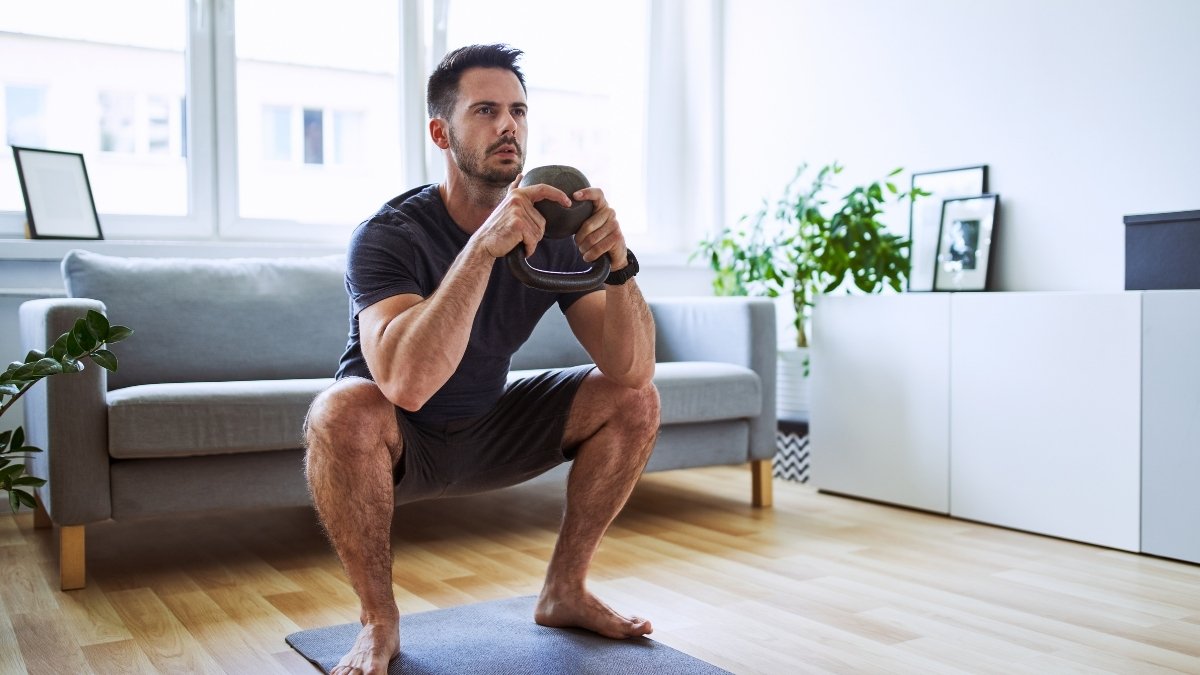
How to perform:
- Hold a dumbbell vertically at chest height, elbows pointing down
- Stand with feet shoulder-width apart, toes slightly out
- Imagine sitting back into a chair as you lower down
- Keep your chest up and weight in your heels
- Go down until thighs are parallel to ground (or as low as comfortable)
- Push through your heels to stand back up
- Keep the movement slow and controlled—2 seconds down, 1 second up
Common mistakes to avoid:
- Knees caving inward (push them out as you squat)
- Heels lifting off the ground (shift weight back)
- Rounding your back forward (keep chest proud)
Your prescription: 3 sets of 8-12 reps
Start here if you’re a beginner: Do box squats. Place a sturdy chair behind you and sit down completely between reps. This teaches proper form and builds confidence.
Progression: Start with 15-20 pounds. Add 5 pounds only when you can complete 12 perfect reps for all 3 sets.
Exercise 2: Push-Up Variations
Push-ups build your chest, shoulders, and core without the shoulder stress that bench pressing causes. For strength training for older men, push-ups are safer and more functional than lying on a bench.
The bench press locks you into one position. Push-ups let your shoulder blades move naturally, reducing impingement risk. Plus, they strengthen your core at the same time.
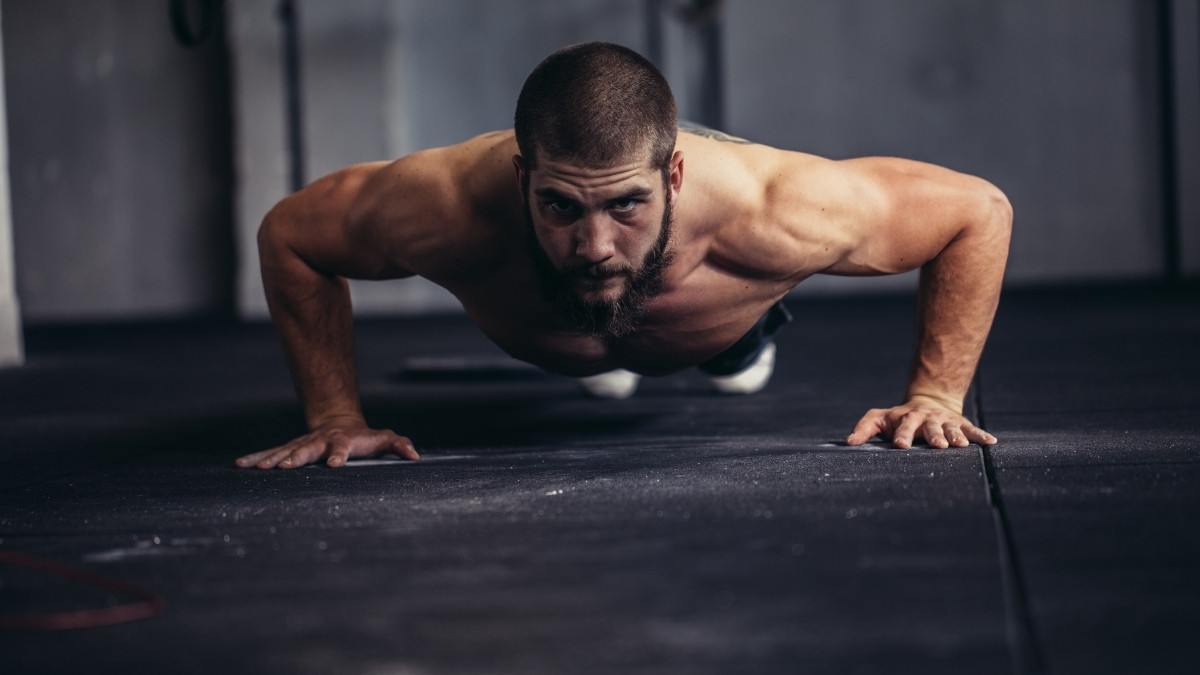
Pick your starting level:
Wall Push-Ups (Easiest):
- Stand arm’s length from a wall
- Place hands on wall at shoulder height, slightly wider than shoulders
- Keep body straight as you bend elbows
- Push back to starting position
- 3 sets of 12-15 reps
Incline Push-Ups (Moderate):
- Use a sturdy counter, table, or bench
- Same form as wall push-ups but more challenging
- The lower the surface, the harder it gets
- 3 sets of 10-12 reps
Standard Push-Ups (Advanced):
- Start in plank position, hands under shoulders
- Body forms straight line from head to heels
- Lower until chest nearly touches ground
- Elbows should point back at 45-degree angle, not straight out
- 3 sets of 6-10 reps
Form checklist:
- Hands directly under shoulders or slightly wider
- Core tight (don’t let hips sag)
- Breathe in as you lower, breathe out as you push up
When to progress: If you can do 15 reps with good form, move to the next harder variation.
Exercise 3: Single-Leg Deadlift
Falls are the leading cause of injury deaths in men over 65. This exercise prevents that by building hip strength, improving balance, and fixing muscle imbalances between your left and right sides.
You use this movement every time you bend to pick something up, tie your shoes, or step over an obstacle. Single-leg work matters more after 50 because balance naturally declines 10% per decade.
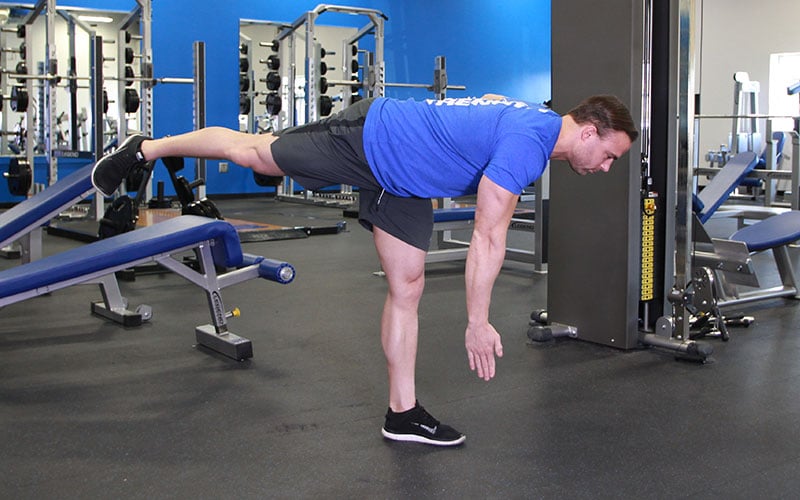
How to perform:
- Stand next to a chair or wall for light support
- Shift weight to your right leg, slight bend in knee
- Hinge forward at the hip (not the waist)
- Let your left leg extend behind you as you lean forward
- Keep your back flat, not rounded
- Lower until you feel a stretch in your right hamstring
- Squeeze your glutes to return to standing
- Repeat all reps on one side before switching
Critical form points:
- Hinge at the hip like closing a car door with your butt
- Keep your back flat throughout—imagine balancing a cup of water on your lower back
- Don’t rotate your hips—keep them square to the ground
- You don’t need to lift your back leg high—focus on the hip hinge
Common mistakes:
- Rounding the back (leads to pain)
- Rotating hips open (reduces effectiveness)
- Lifting back leg too high (causes arching)
Your prescription: 3 sets of 6-8 reps per leg
Start with bodyweight only. Master the movement pattern before adding dumbbells. Once you can do 8 reps per leg with perfect form, hold a light dumbbell (10-15 pounds) in the hand opposite your standing leg.
Mobility Exercises: Stay Flexible and Pain-Free
Strength means nothing if you can’t move without pain. These three mobility exercises keep your spine, hips, and shoulders flexible—the areas that get stiff first in men over 50.
Exercise 4: Thoracic Spine Rotation
Your upper back gets locked up from hours of sitting at a desk, driving, and looking down at your phone. This causes lower back pain and kills your golf or tennis swing. This simple rotation fixes it.
When you can’t rotate your upper back, your lower back tries to do the job instead. That’s why your lower back hurts after a round of golf. This exercise prevents that by restoring rotation where it belongs.
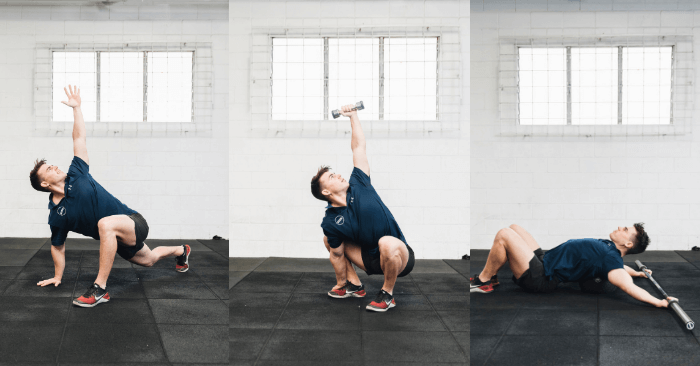
How to perform (Thread the Needle):
- Start on hands and knees in a table position
- Place your right hand behind your head, elbow pointing out
- Rotate your right elbow down and thread it under your left armpit
- Reverse the movement and rotate your elbow up toward the ceiling
- Move slowly and feel the stretch in your upper back
- Complete 10 reps, then switch sides
Daily benefits you’ll notice:
- Backing up your car without neck pain
- Looking over your shoulder to check blind spots
- Better rotation in your golf or tennis swing
- Less stiffness after sitting at your desk
Your prescription: 10 reps on each side, every workout day
This takes 2 minutes and prevents hours of back pain. Do it before your strength exercises as part of your warm-up.
Exercise 5: Hip Flexor Stretch with Reach
Sitting tightens your hip flexors, which pulls on your lower back and causes pain. If you sit for more than 3 hours a day—driving, at a desk, watching TV—your hip flexors are tight right now.
Tight hip flexors tilt your pelvis forward. This forces your lower back to arch too much, creating constant strain. The reaching component activates your core and deepens the stretch in ways a basic lunge never could.
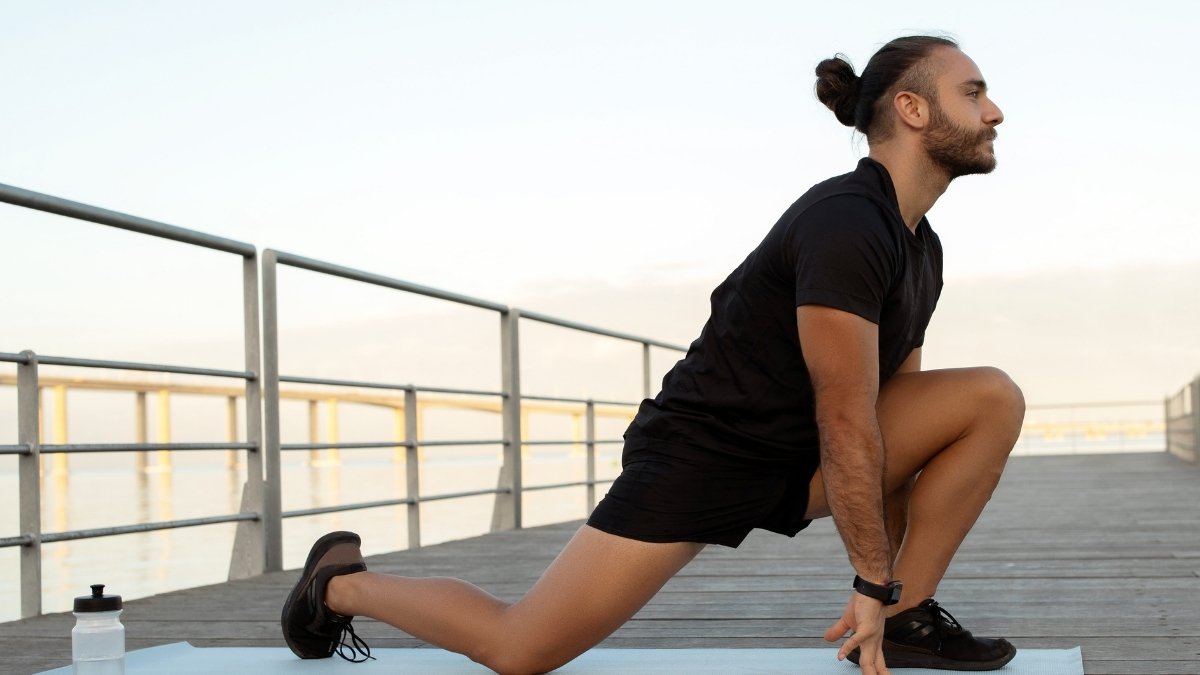
How to perform:
- Kneel on your right knee (use a pad or towel for comfort)
- Place your left foot flat on the ground in front, knee at 90 degrees
- Keep your torso upright, chest proud
- Tuck your pelvis under slightly (like you’re zipping up tight jeans)
- Reach your right arm (same side as kneeling knee) straight overhead
- Lean slightly to your left side while reaching
- You should feel a stretch down the front of your right hip
- Hold for 30-45 seconds, breathing normally
Why the reach matters: Lifting your arm on the same side intensifies the hip flexor stretch and wakes up your core muscles. This makes the stretch 40% more effective than a basic kneeling lunge.
Your prescription: 3 reps per side, holding each for 30-45 seconds
When to do it: After sitting for long periods, before workouts, or anytime your lower back feels tight. These age-appropriate workouts take just 5 minutes but make a massive difference in how your back feels.
Exercise 6: Shoulder Wall Slides
Your shoulders lose mobility faster than any other joint after 50. This makes putting on a coat, reaching overhead shelves, and even sleeping on your side uncomfortable. Worse, it sets you up for rotator cuff injuries.
Wall slides maintain shoulder mobility and teach your shoulder blade to move correctly. Most shoulder pain comes from the shoulder blade not moving properly, not from the shoulder joint itself.
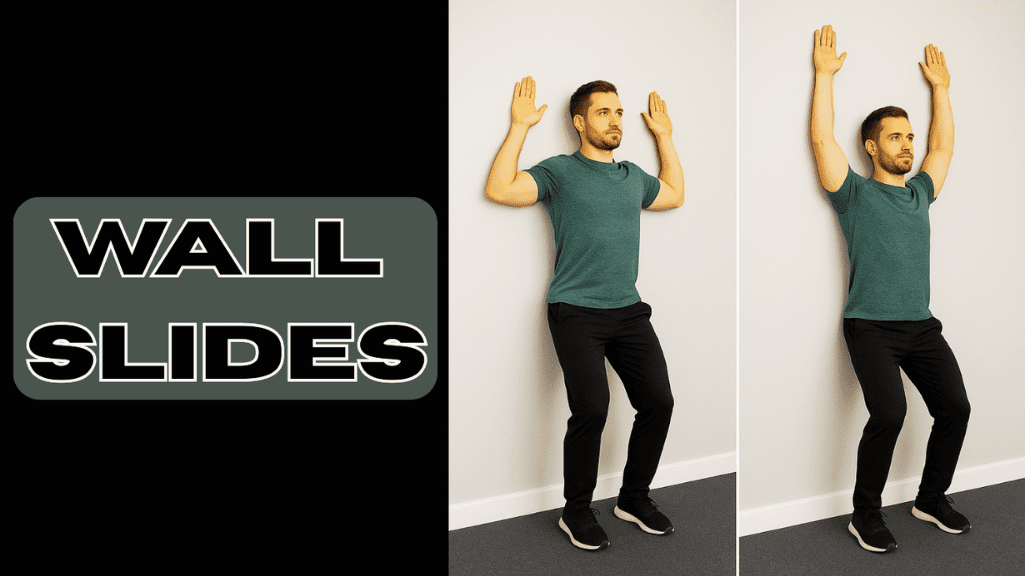
How to perform:
- Stand with your back flat against a wall
- Press your lower back, upper back, and head against the wall
- Raise your arms to shoulder height, elbows bent at 90 degrees
- Press the backs of your hands and forearms against the wall
- Slowly slide your arms up the wall as high as you can
- Keep everything in contact with the wall—don’t let your back arch
- Slide back down to starting position with control
- The movement should feel smooth, not painful
Form check: If you can’t keep your lower back against the wall, you’re reaching too high. Only go as high as you can while maintaining contact. Your range will improve over time.
Your prescription: 2 sets of 12 slow reps
Real-world wins:
- Grab things from high shelves without pain
- Put on jackets and shirts easily
- Sleep on your side comfortably
- Prevent rotator cuff tears that require surgery
Do these before every workout and on rest days. They take 3 minutes and keep your shoulders healthy for decades
Balance & Core Exercises: Prevent Falls and Back Pain
A strong core prevents back injuries during daily tasks. Good balance prevents falls that can end your independence. These three exercises for men over 50 train both at the same time.
Exercise 7: Pallof Press
Traditional crunches and sit-ups compress your spine and can cause more back pain than they prevent. The Pallof press builds a stronger, more functional core without any spine stress.
This exercise trains anti-rotation—your ability to resist twisting forces. That’s exactly what you need when carrying groceries, lifting a grandchild, or swinging a golf club. A strong core that resists rotation protects your back during every daily movement.
Equipment needed: One resistance band anchored at chest height (tie it around a pole, secure it in a door anchor, or loop it around a sturdy railing)
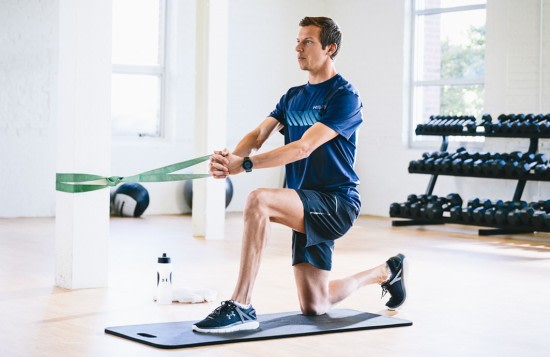
How to perform:
- Stand sideways to the anchor point, band in both hands at chest
- Step far enough away to create tension in the band
- Hold the band at your chest with both hands
- Press your arms straight out in front of you
- The band will try to pull you sideways—resist that rotation
- Keep your torso completely still and facing forward
- Hold for 2 seconds, then bring hands back to chest
- Complete all reps on one side, then turn and face the other direction
What you should feel: Your abs and obliques working hard to keep you from rotating. If you’re shaking slightly, that’s good—your core is learning stability.
Your prescription: 10 reps per side, 2-3 sets
Benefits you’ll notice: Better posture throughout the day, easier time lifting and carrying objects, less back pain when doing yard work or home projects.
Exercise 8: Bird Dog
This exercise trains your core stability, improves coordination, and builds balance—all critical skills that decline with age. It looks simple but challenges your body in ways that matter for muscle loss prevention after 50.
The bird dog forces your core to stabilize your spine while your arms and legs move. This is exactly what your body does when you walk, climb stairs, or reach for something while standing.
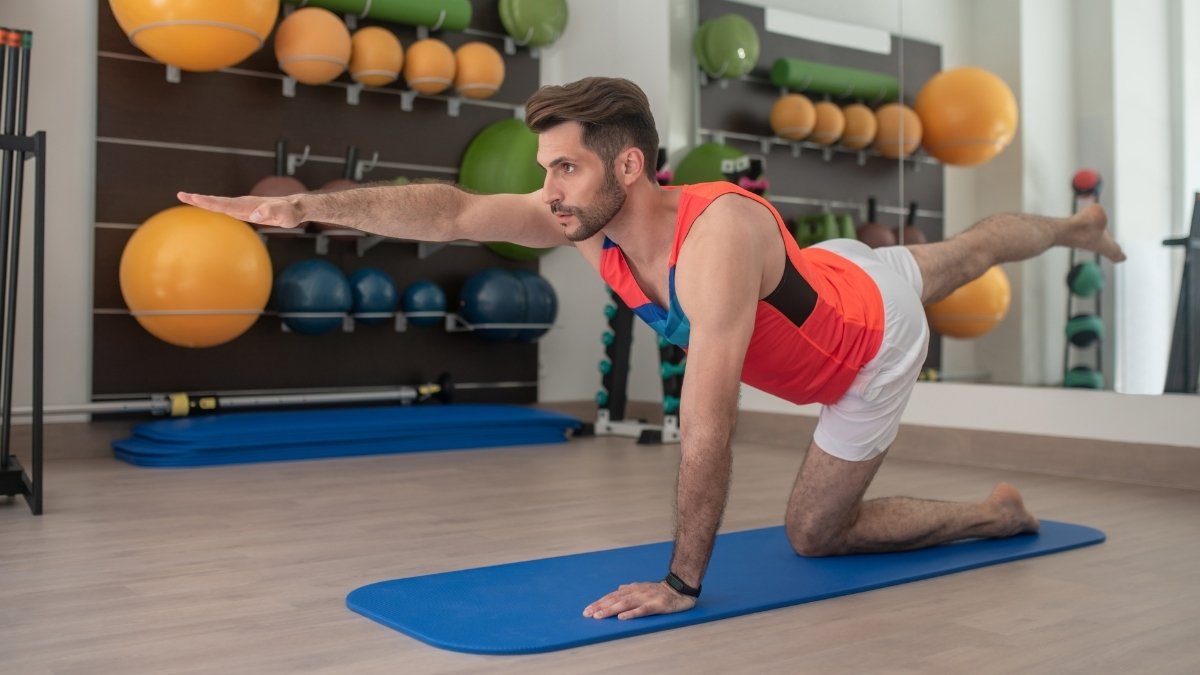
How to perform:
- Start on your hands and knees (use a pad for comfort)
- Hands directly under shoulders, knees under hips
- Keep your back flat like a table—don’t let it sag or arch
- Slowly extend your right arm straight forward
- At the same time, extend your left leg straight back
- Your arm and leg should form a straight line with your body
- Hold for 3 seconds without letting your hips rotate
- Return to starting position with control
- Repeat with opposite arm and leg
Critical form cues:
- Don’t let your hips twist or drop to one side
- Keep your back completely flat—imagine balancing a glass of water
- Move slowly and with control—this isn’t a race
- Look down at the floor to keep your neck neutral
Your prescription: 3 sets of 8 reps per side (16 total per set)
Too challenging? Start with just arm lifts or just leg lifts until you build enough stability. There’s no shame in modifying—proper form matters more than doing the full version badly.
What it prevents: Back injuries from sudden movements, poor balance that leads to falls, weak core that causes chronic back pain.
Exercise 9: Single-Leg Balance with Reach
One in four men over 65 falls each year, and falls are the leading cause of injury deaths in this age group. This exercise trains your balance in a functional way that directly prevents falls.
You use single-leg balance every time you step over something, walk on uneven ground, or catch yourself from stumbling. Training this skill now can literally save your life later.
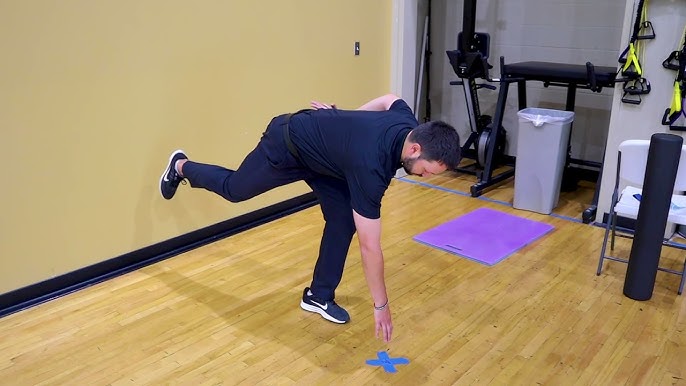
How to perform:
- Stand near a wall or counter for safety (don’t hold on unless needed)
- Shift your weight to your right leg
- Lift your left foot slightly off the ground
- Once stable, reach your left hand forward toward an imaginary object
- Then reach to your left side, then behind you
- Keep your standing leg slightly bent, not locked
- Focus on a point on the wall to help maintain balance
- Switch legs after completing the time
Progression levels:
- Level 1: Eyes open, near wall (start here)
- Level 2: Eyes open, away from wall
- Level 3: Eyes closed, near wall
- Level 4: Standing on a pillow or foam pad (advanced)
Your prescription: 3 sets of 30-45 seconds per leg
Safety first: Always practice near a wall or counter initially. It’s smart, not weak. As you improve over weeks, you can move away from support.
Real-world benefits:
- Catch yourself when you trip without falling
- Walk confidently on uneven surfaces
- Navigate icy sidewalks safely
- Maintain independence as you age
Do this exercise every workout. Balance deteriorates quickly when you stop training it, but improves rapidly when you practice consistently.
Final Thoughts:
These 9 foundation exercises can help you restore up to 25–30% of the muscle you’ve lost with age. And here’s the good news — it’s never too late to start rebuilding strength, balance, and confidence.
This isn’t about trying to feel 30 again. It’s about becoming the strongest, most capable version of yourself at 50, 60, or beyond. Every rep helps your body stay mobile, pain-free, and ready for the life you want to live.

Start small: try the goblet squat, wall push-ups, and bird dog this week. Once they feel easy, add one or two more exercises from the list. Consistency beats perfection — always.
These exercises for men over 50 aren’t about turning back the clock — they’re about making the most of the decades ahead.


